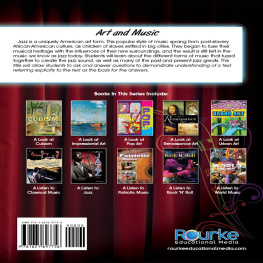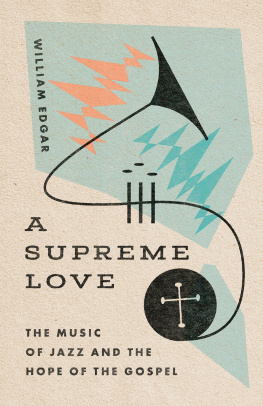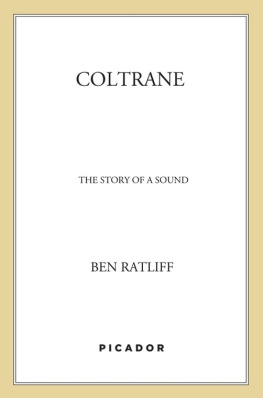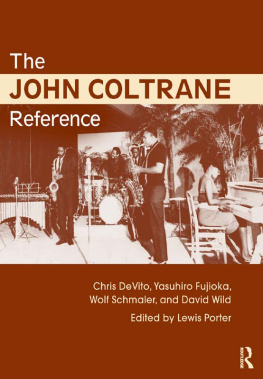MORE ADVANCE PRAISE FOR THE JAZZ OF PHYSICS
Whether hes hanging with Brian Eno or Brian Greene, Alexander never loses sight of the math or the melodies, never condescends to his reader, but rather uses his own childlike awe and personal charm to take us into the details of chords and equations. Its impossible to resist following him as he solos with the equations of D-branes on paper napkins in jazz clubs, searching for the eloquent underlying harmonies that brought the universe (and us) into being.
K. C. Cole, author of Something Incredibly Wonderful Happens and The Universe and the Teacup: The Mathematics of Truth and Beauty
Music, physics, and mathematics have lived in tune since Pythagoras and Kepler, but Stephon Alexanders book creates a new and powerful resonance, coupling the improvisational world of jazz to the volatile personality of quantum mechanics, and making the frontiers of cosmology and quantum gravity reverberate like in no other book.
Joo Magueijo, professor of physics, Imperial College London, and author of Faster Than the Speed of Light
The Jazz of Physics is a cornucopia of music, string theory, and cosmology. Stephon Alexander takes his reader on a journey through hip hop, jazz, to new ideas in our understanding of the first moment of the big bang. It is a book filled with passion, joy, and insight.
David Spergel, Charles Young Professor of Astronomy and department chair, Department of Astrophysical Sciences, Princeton University
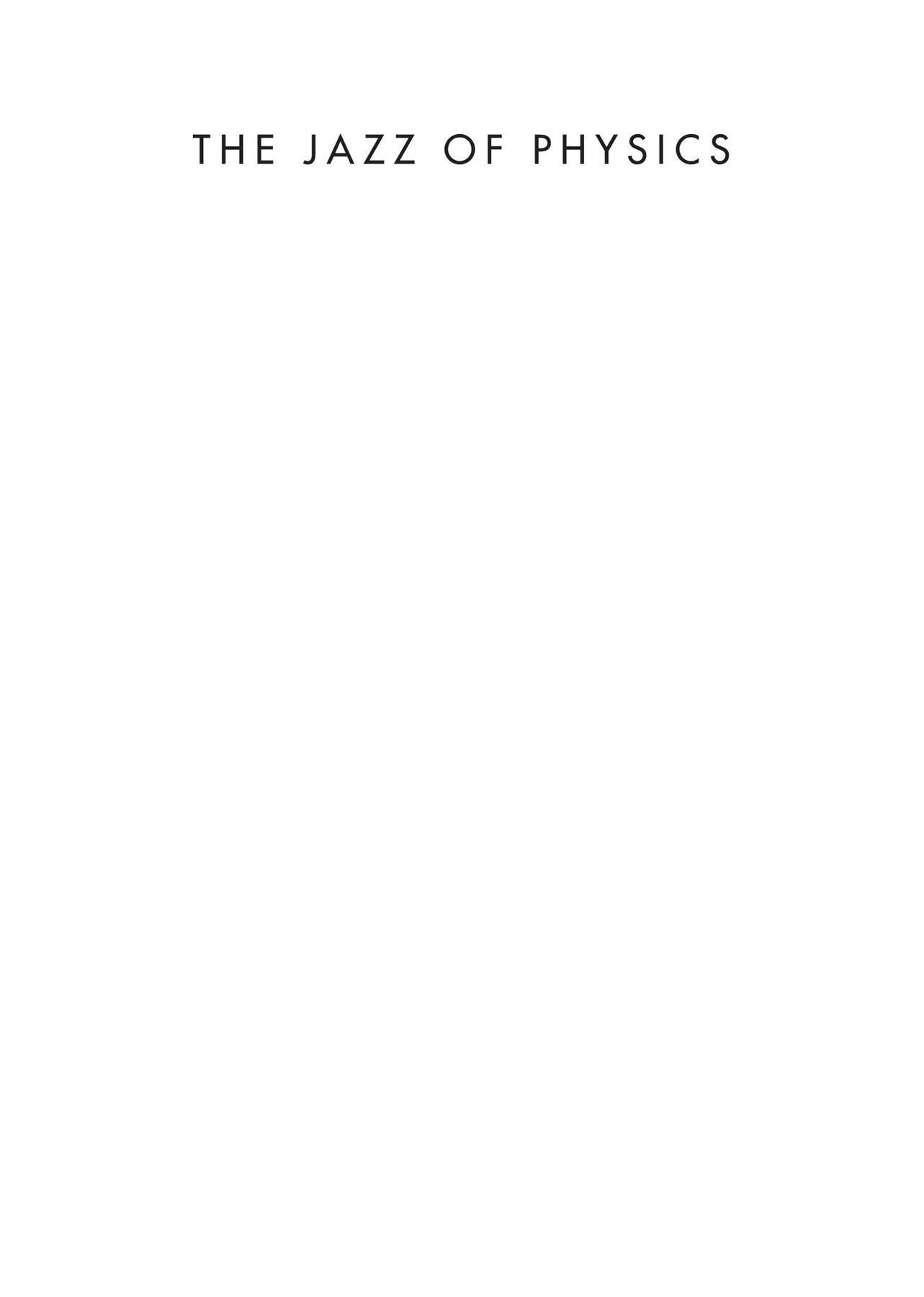

Copyright 2016 by Stephon Alexander
Published by Basic Books,
A Member of the Perseus Books Group
All rights reserved. Printed in the United States of America. No part of this book may be reproduced in any manner whatsoever without written permission except in the case of brief quotations embodied in critical articles and reviews. For information, contact Basic Books, 250 West 57th Street, New York, NY 10107.
Books published by Basic Books are available at special discounts for bulk purchases in the United States by corporations, institutions, and other organizations. For more information, please contact the Special Markets Department at the Perseus Books Group, 2300 Chestnut Street, Suite 200, Philadelphia, PA 19103, or call (800) 810-4145, ext. 5000, or e-mail .
Set in 11.5-point Adobe Garamond Pro
Names: Alexander, Stephon, author.
Title: The jazz of physics: the secret link between music and the structure of the universe / Stephon Alexander.
Description: New York: Basic Books, [2016] | Includes bibliographical references and index.
Identifiers: LCCN 2015050500| ISBN 9780465098507 (ebook)
Subjects: LCSH: Cosmology. | Universe. | Special relativity (Physics) | Space and time. | Musicology. | MusicAcoustics and physics. | MusicPhilosophy and aesthetics.
Classification: LCC QB981 .A54 2016 | DDC 523.1dc23
LC record available at http://lccn.loc.gov/2015050500
10 9 8 7 6 5 4 3 2 1
Dedicated to my parents, Felician and Keith, and my daughter Kolka
CONTENTS
It occurred to me by intuition, and music was the driving force behind that intuition. My discovery was the result of musical perception.
Albert Einstein (when asked about his theory of relativity)
And I cherish more than anything else the Analogies, my most trustworthy masters. They know all the secrets of Nature, and they ought least to be neglected in Geometry.
Johannes Kepler
Humans are special. Elevenbillion years after the birth of the universe, conditions were just right for the seething, mineral-rich oceans of the planet we call Earth to spawn lifea mutating, evolving, hungry survivor. In just the last sliver of the life of the universe, we humans have grown both to cultivate Earth and unabashedly look to the skies to understand where we come from.
The people of every culture have pondered their origins and the origins of the cosmos. What is this space around us? Where did we come from? It is no mistake that these questionsquestions that many of us asked as childrenremain some of the most pressing in science. Questions like these point both to our innate curiosity about our origins and, as questions do, to the limits of our knowledge. For millennia we could only answer these questions with myth. But since the scientific revolution, we have tried to put myth aside, leaving the exploration of human and universal origins to scientists and their hard-fact methodologies. Modern cosmologists, though armed with fancy equations and high-tech experiments, can be said to be the myth makers of our time. Despite our precision mathematics and experiments, new surprises in modern physics and cosmology have emerged that compel some of the most able physicists to resort to myth making to try and explain the mind-bending information they have uncovered about the nature of the universe.
Heroic attempts have been made to relate the concepts that underlie modern cosmology to lay readers, but it is all too easy for books to fall short of the promise to explain. Putting into words subjects like general relativity and quantum mechanics, which are naturally communicated with the language of mathematics, is a tall order. These complex equations can blind even physicists, who themselves are challenged to completely understand or visualize what their formulas are telling them, a fact that emphasizes the need to find other ways to conceptualize the structure of the universe through clear physical pictures or analogies. Ive found that the most successful books in communicating ideas are those that find the best analogies to mirror the physics. In fact, analogical reasoning will be a key driving force behind this book.
This book will take you on a firsthand journey into the process of discovery in theoretical physics research. We will see that, contrary to the logical structure innate in physical law, in our attempts to reveal new vistas in our understanding, we often must embrace an irrational, illogical process, sometimes fraught with mistakes and improvisational thinking. Although it is important for both jazz musicians and physicists to strive for technical and theoretical mastery in their respective disciplines, innovation demands that they go beyond the skill sets they have mastered. Key to innovation in theoretical physics is the power of analogical reasoning. In this book, I will show how the art of finding the right analogies can help us break new ground and traverse the hidden quantum world to the vast superstructure of our universe.
In this book, music will be the analogy that not only will help us understand much of modern physics and cosmology but will help unveil some recent mysteries that physicists face. Even while writing this book, this analogical thinking enabled me to discover a new approach to a long-standing unresolved problem in early universe cosmology. One of the biggest questions in understanding this, and a huge open issue in cosmology, is how the first structures emerged from an empty and featureless infant universe. The intricate way that the fundamental laws of physics work together to create and sustain the overarching structure of the universe, responsible for our very existence, seems like magicnot unlike how the bare bones of music theory have given rise to everything from Twinkle Twinkle Little Star to Coltranes Interstellar Space. By using an interdisciplinary focus, inspired by three great minds (John Coltrane, Albert Einstein, and Pythagoras), we can begin to see that the magical behavior of the blossoming cosmos is based in music.
Next page







